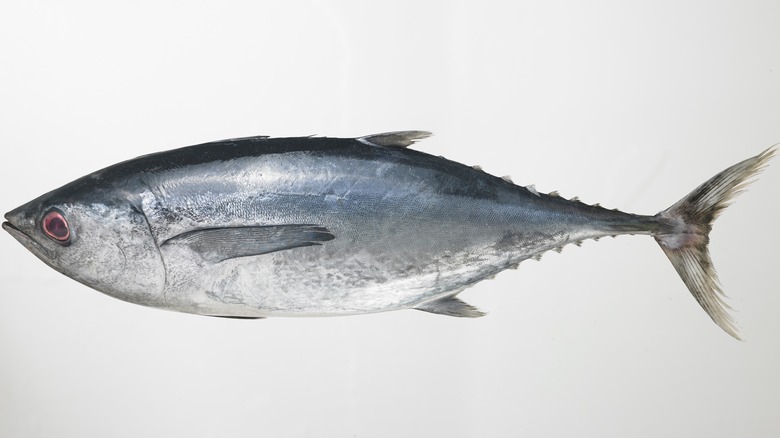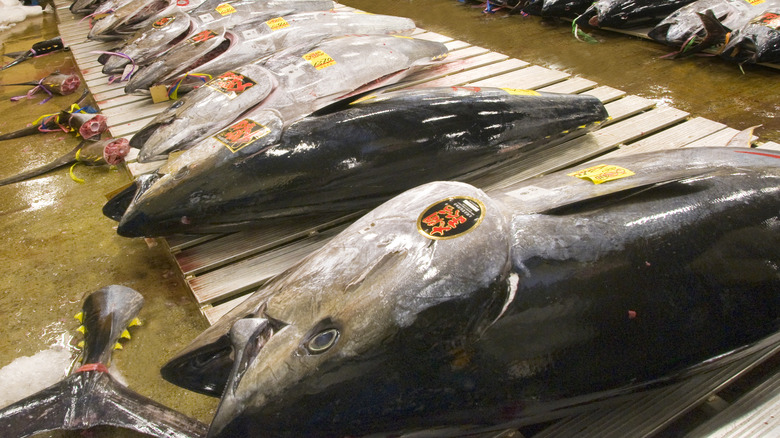Japan's Top Tuna All Come From The Same Strait
The Japanese love tuna. NBC News reports Japan consumes 450,000 tons of tuna every year, the most of any nation, even though scientists have warned high mercury levels in the fatty fish may lead to brain damage in humans. Southern bluefin tuna (Thunnus maccoyii), the type prized by sushi chefs, is one of the worst when it comes to toxic amounts of heavy metal.
Yet, the raw tuna market still thrives in Japan. Just after New Year's Day in 2019, the self-proclaimed Tuna King and sushi restaurateur Kiyoshi Kimura paid a world record $3.1 million for a quarter-ton beast, according to Fortune. The high bid was for a high-quality fish from Oma in northern Japan, says Umai Mono Amori. The record price was part of a New Year's tradition where business owners duel to reach the highest bid for a tuna, says Michelin Guide, under the bright lights of TV coverage.
Prized bluefin tuna was not always so. The first record of Japanese people eating tuna dates back to the 1830s, according to Trevor Corson, author of "The Story of Sushi." That was when a bumper catch outside of Edo (now Tokyo) led to an overabundance of the fatty fish. Street vendors capitalized, and lower-class citizens got their first regular taste of the iron-rich red flesh. Then things changed a century and a quarter later. Westernization and modernization led to two major changes in Japan: diets higher in fat and refrigeration. Then Bluefin tuna became a cultural icon.
The best bluefins are caught in northern Japan's Tsugaru Strait
Around 40 years ago, the Japanese palate embraced bluefin as a delicacy rather than peasant food. One area rich in bluefin tuna is the Tsugaru Strait, a narrow sea passage averaging 20 miles wide that connects the Pacific Ocean to the east and the Sea of Japan to the west. To the south sits Honshu Island, and to the north is Hokkaido Island, says Britannica.
Why the Tsugaru Strait? Two reasons, notes Michelin Guide. As the tuna migrate to follow their favorite food (squid), they eat a lot to bulk up for the winter, according to the Australian government. By the time they reach the Tsugaru Strait in late autumn and early winter, they have developed a large layer of fat to survive the frigid waters. This fat is what makes bluefin caught in Oma, the main fishing port in the Tsugaru Strait, such a revered delicacy (via Seafood Source).
The fishing method is the other reason why Oma bluefin are prized above others. Men use a single line and a hook to reel in their catch so as not to damage the flesh of the fish. Much like authentic French champagne, bluefin tuna from Oma are denoted as such with special markings and serial numbers notating who caught the fish and which method. Anyone who buys an Oma bluefin possesses what many in Japan believe to be the tastiest tuna in the world.

